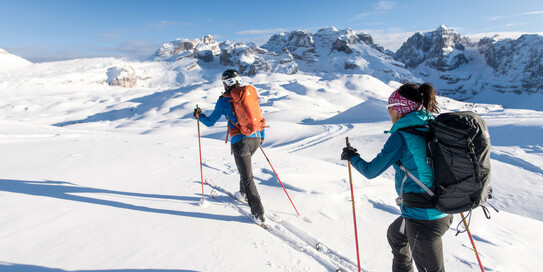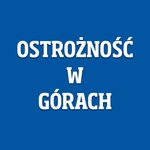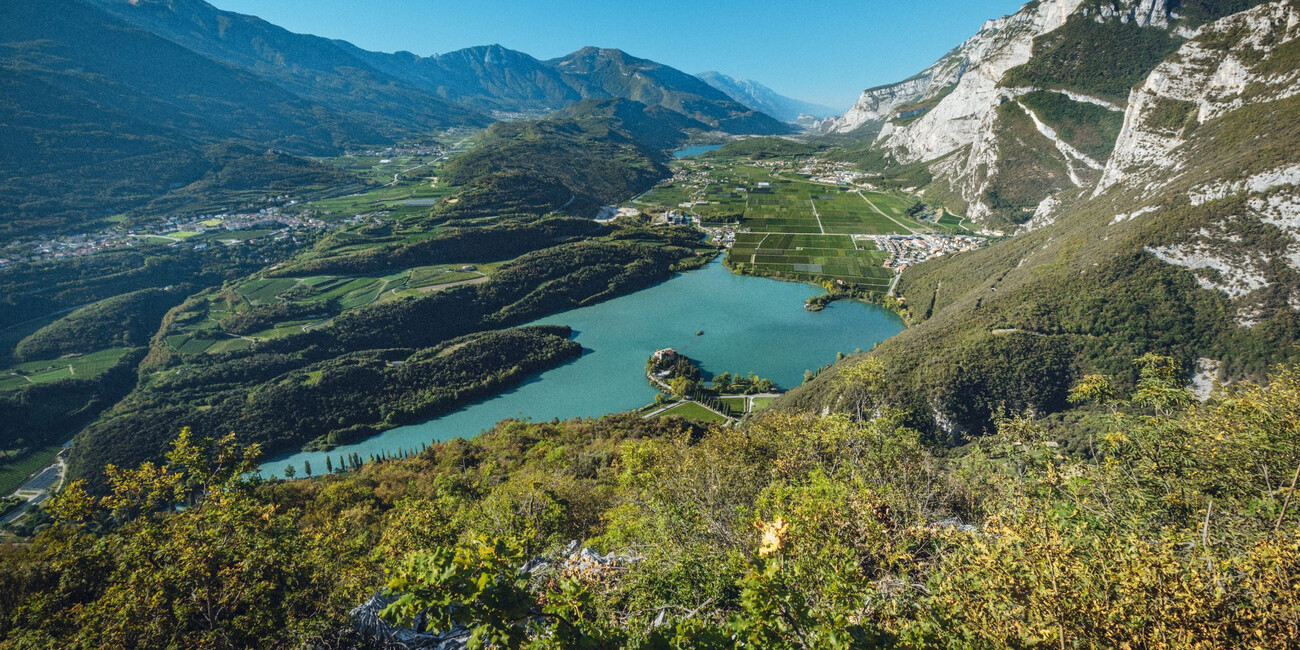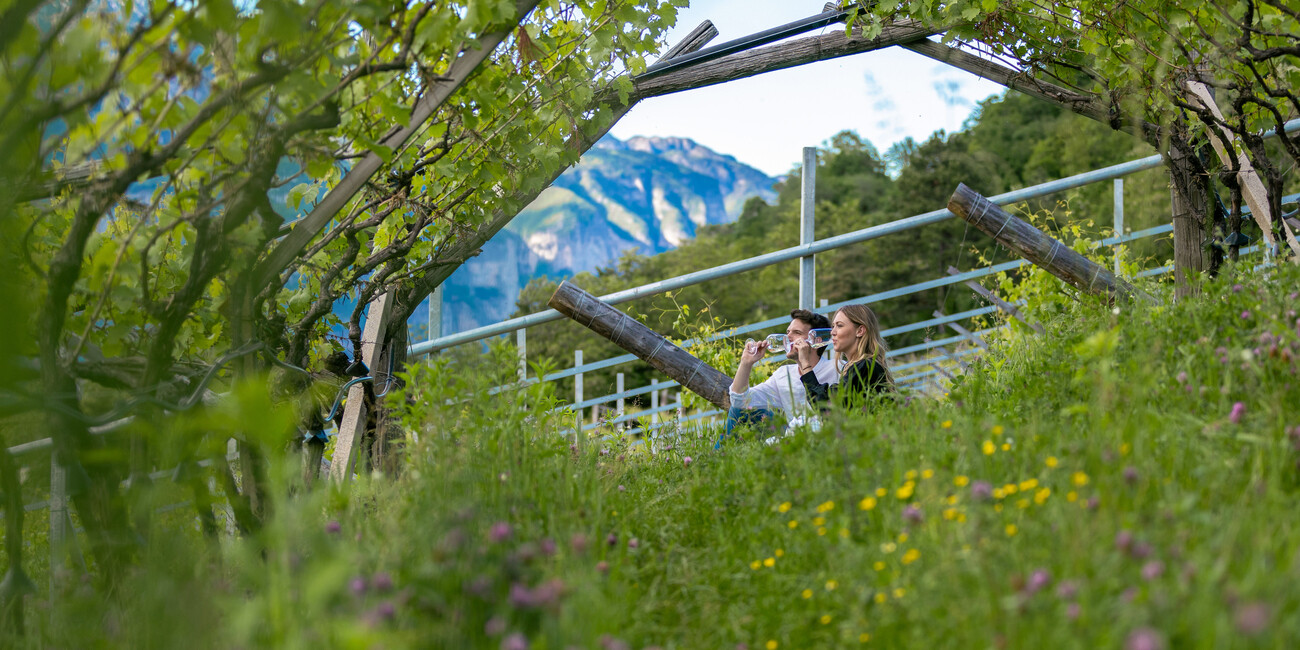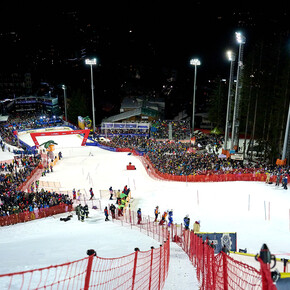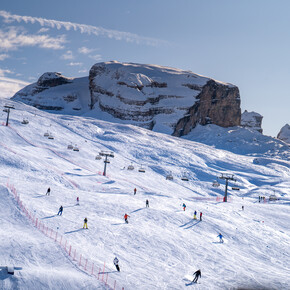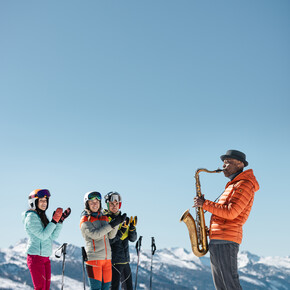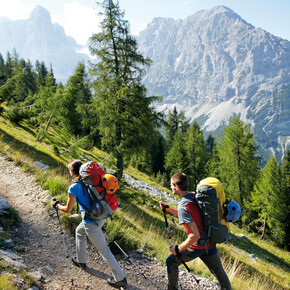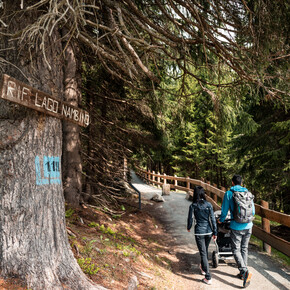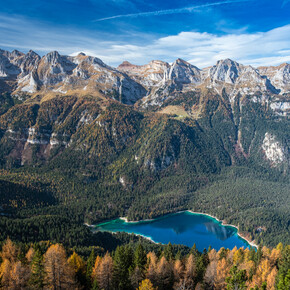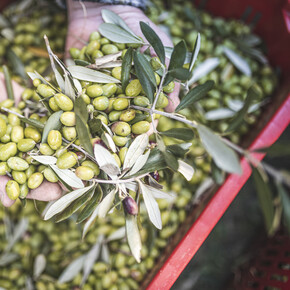SPRING BREAKS IN THE VINEYARDS
At the end of March DiVinNosiola, the festival dedicated to local white wine and the “raisin” variant of Vino Santo Trentino, returns to Valle dei Laghi. Either by foot or on two wheels there are numerous wine tourism options in the main production areas of the region. Its vines populate the sunny hills of Lavis and Sorni north of Trento where the soil is calcareous and rich in compact porphyritic rock, ideal for fresh, mineral and long-lived wines. Sensual and softer in aromas is the Nosiola in the Valle dei Laghi which thrives in the sun of nearby Lake Garda and benefits from the coolness of the Ora, the wind that blows here from afternoon to evening. The climate and the proximity of seven lakes offer the ideal conditions for drying its grapes in the fruit rooms of the cellars where Vino Santo Trentino was born, one of the most sought-after dessert wines in Italy.
At the end of March DiVinNosiola, the festival dedicated to local white wine and the “raisin” variant of Vino Santo Trentino, returns to Valle dei Laghi. Either by foot or on two wheels there are numerous wine tourism options in the main production areas of the region.
Its vines populate the sunny hills of Lavis and Sorni north of Trento where the soil is calcareous and rich in compact porphyritic rock, ideal for fresh, mineral and long-lived wines. Sensual and softer in aromas is the Nosiola in the Valle dei Laghi which thrives in the sun of nearby Lake Garda and benefits from the coolness of the Ora, the wind that blows here from afternoon to evening. The climate and the proximity of seven lakes offer the ideal conditions for drying its grapes in the fruit rooms of the cellars where Vino Santo Trentino was born, one of the most sought-after dessert wines in Italy.
The first historical evidence surrounding this wine dates back to the sixteenth century when sweet white wines began to be mentioned as true progenitors of the Vino Santo. In a document from 1508, among the goods that are paid every year by the captain of Castel Toblino to the prince bishop of Trento, "six marshes of sweet white wine" are mentioned.
The Nosiola grapes are the origin of another Trentino wine excellence, the Trentino DOC Vino Santo. Harvested with care, so as not to crush the grapes, it is taken to the dryers where it will remain until the first days of March. Here the bunches are spread out on the racks, once with a cane bottom, today with wire mesh with more or less dense mesh, where the drying process begins which reduces their weight by about a third. During Holy Week, from which the wine probably takes its name, the dried grapes are pressed. The resulting must, decanted several times to be cleaned, is then left to decant. Fermentation takes place in "exhausted" wooden barrels (mostly oak), now incapable of imparting woody flavours to the product. Four years after the harvest - the minimum period set by the specifications - bottling takes place: but most producers wait much longer, on average seven years, normally ten. Once in the bottle, Vino Santo can defy time: experts say that even after half a century (if the cork and the quality of the wine are good) a bottle of Vino Santo always remains a rewarding experience. A wine to be forgotten in the cellar and pleasantly rediscovered years later.
An event that celebrates its food and wine history has been linked for years to this wine that has marked the hilly landscape of the Valle dei Laghi, starting with the processing of the native Nosiola vine. “DiVinNosiola, when wine becomes Holy”, returns from 21 to 30 March 2024, to animate the valley between the foothills of the Dolomites and Garda, dotted with 7 alpine lakes and small rural villages surrounded by orchards, olive groves and vineyards. DiVinNosiola offers guided tastings and tastings in the cellars, theatrical performances, including in the cellar, book presentations, tastings/shows dedicated to women, and trekking in nature.
https://www.visittrentino.info/en/guide/events/divinnosiola_e_82446832
Taste&Bike in Valle dei Laghi
In Valle dei Laghi, all year round from Tuesday to Saturday, you can take part in a tasteful experience on your bike, among the cultivated fields of Nosiola and the beauty of an area dotted with numerous small lakes, ancient rural villages, proposed by the Trentino Wine and Flavors Route. You cycle along an easy circular route on the cycle path surrounded by rows of vines and, stage after stage, you meet the local producers associated with the Wine and Flavor Route. There are two guided visits to the cellars to delve into the stories and traditions of as many farms in the area, and then savor the locally produced wines during tastings. The experience ends with a tasty lunch at a typical Trentino tavern in the area. Info and reservations: Trentino Wine and Flavor Route info@stradavinotrentino.com
In the same area, you can also walk on the paths between the vines. The route develops around the lakes of Santa Massenza and Toblino, passing through the villages of Padergnone and Santa Massenza where there are several distilleries in which grappa is produced. Once you reach the town of Sarche, the Nosiola Path heads towards Ponte Oliveti and then immerses itself among the vineyards towards Calavino.
Cycling among the vineyards of Piana Rotaliana
We are north of Trento, where the alluvial soils, fed by the Adige and its tributaries, and a natural barrier of mountains that keeps the colder currents away, have created the ideal conditions for growing an indigenous vine that produces a red wine with a strong personality, a distinctive and unmistakable character, the Teroldego Rotaliano D.O.C. Full-bodied, generous and elegant, deeply territorial (it is the first D.O.C. recognized in Trentino) and therefore unique. On the dinner tables of the Viennese Habsburg nobility was the "Tiroler Gold", the Gold of Tyrol, but the origins of the name are lost over the centuries and re-emerge in the pages of the "Histories" of the Council of Trent which mention "the Teroldeghi wines..." Also, the strong ruby red colour is linked to a legend: it tells of a dragon that terrorized the population and when he was killed with a ruse by the noble Count Firmian, Teroldego vines sprouted from the drops of his blood that fell on the ground.
Many of the region's folk tales can be discovered through a new cycling route that touches the most evocative places of the Piana Rotaliana - Königsberg and crosses vineyards, rivers, climbs panoramic hills, reaching villages, cellars, historic farms and farmhouses.
The Giro del Vino 50 is 50km long and embraces all six villages of the Piana Rotaliana. The route consists of two rings: the one to the north, completely flat, and the one to the south, with climbs and greater panoramic views. This tour leads through vineyard landscapes of great beauty and takes cyclists by the numerous wineries and architectural gems waiting to be discovered alongside the peaceful flow of the Adige River. Here you can stop and also book a guided tour and a tasting. In the cellars, there are many very different experiences: trekking, walks, workshops and even treasure hunts for families. The Trento train station is a few kilometres away and regional trains stop in both Mezzocorona and Lavis. Other villages are connected by the local Trento-Malè railway which transports bikes upon reservation. Information: www.pianarotaliana.it
Mio Trentino is the official app for experiencing Trentino. It immediately offers lots of advice for your holiday: what to do and what to see and always updated information on openings, events and activities. It's like having a friend who helps us plan the trip, suggests tailor-made experiences and is ready to answer any questions
